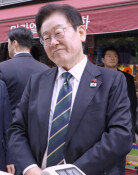Children on Seongam Island
Children on Seongam Island
Posted January. 11, 2023 07:44,
Updated January. 11, 2023 07:44

Some events become traumatic not at the moment but after they happened and are contextualized. Ihara Hiromis's novel "Ah! Seongam Island" can be precious in that it searches for the ethics related to such trauma.
Seongam Island is located in Ansan, Korea. There was a kind of detention camp called Seongam Academy from 1942 to 1945. During the Japanese colonial era, the Japanese Government-General of Korea put hundreds of stray and homeless children on the streets into the camp to turn them into so-called Japan's loyal subjects. Children there used to call drill instructors father. Some of those instructors were Koreans who changed their names to Japanese. It was a nightmarish place. Some children drowned in the sea while escaping from horrible life there. Those caught running were beaten almost to death by instructors. Dead children were just numbers. They were called by the numbers on their jackets, not by their names.
The author depicts the tragedy in the form of a novel. As the son of the academy's deputy director, he lived there from when he was seven to ten, along with his mother and sisters. They all returned to Japan after the war, and none of them ever mentioned the place since then. But the author could not forget what happened there. He could not get those awful images of abused children and tragic incidents out of his head. His memories in those young years turned into trauma after he realized what happened there was atrocities by Imperialist Japan.
It became an obsession of his to let the world know about the tragedy on Seongam Island. He investigated what happened more detail, visiting the place more than 50 times. His work bore fruit by publishing the novel "Ah! Seongam Island" in 1989. With the novel, the truth of Seongam Academy was finally brought to the surface. Shockingly, the academy continued to exist as a detention facility for orphans and was shut down only in 1982, long after the nation's liberation from Japan.
Indian philosopher Gayatri Spivak once described the victims of Seongam Academy as those who could not speak for themselves. The person who spoke for those lowest and most neglected of all was not Korean but Japanese. His heart is dedicated to the world other than his own, which should be cherished.







